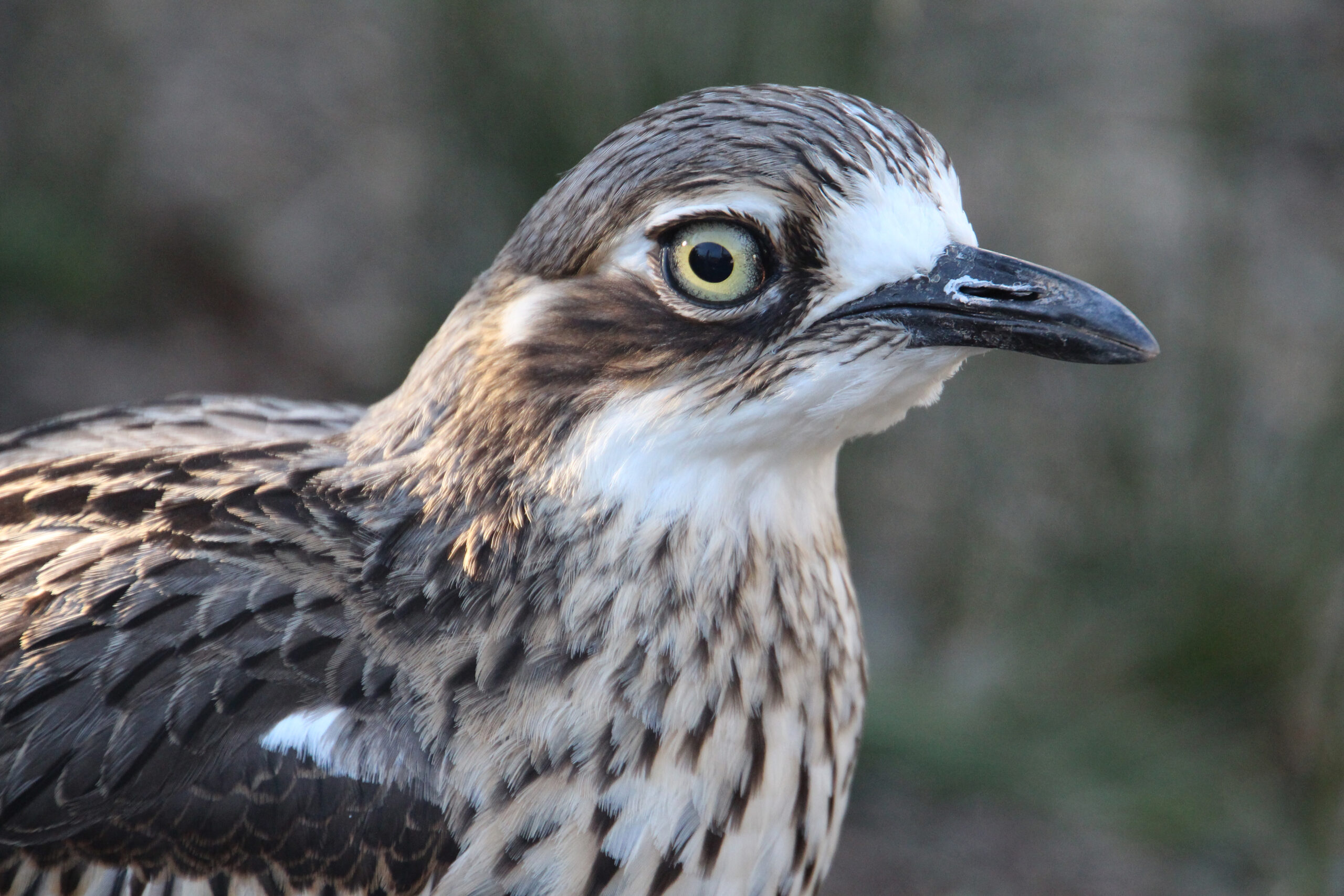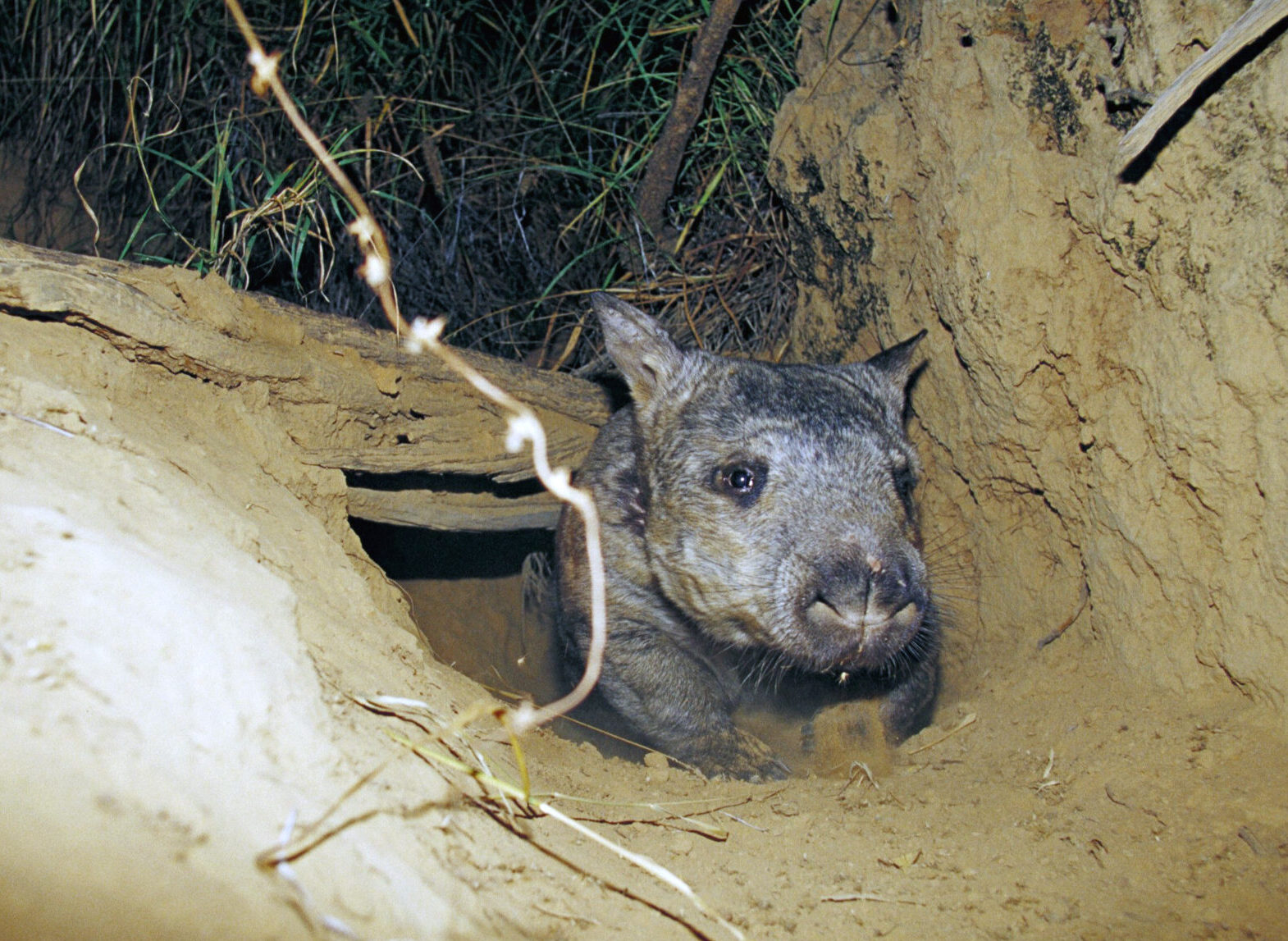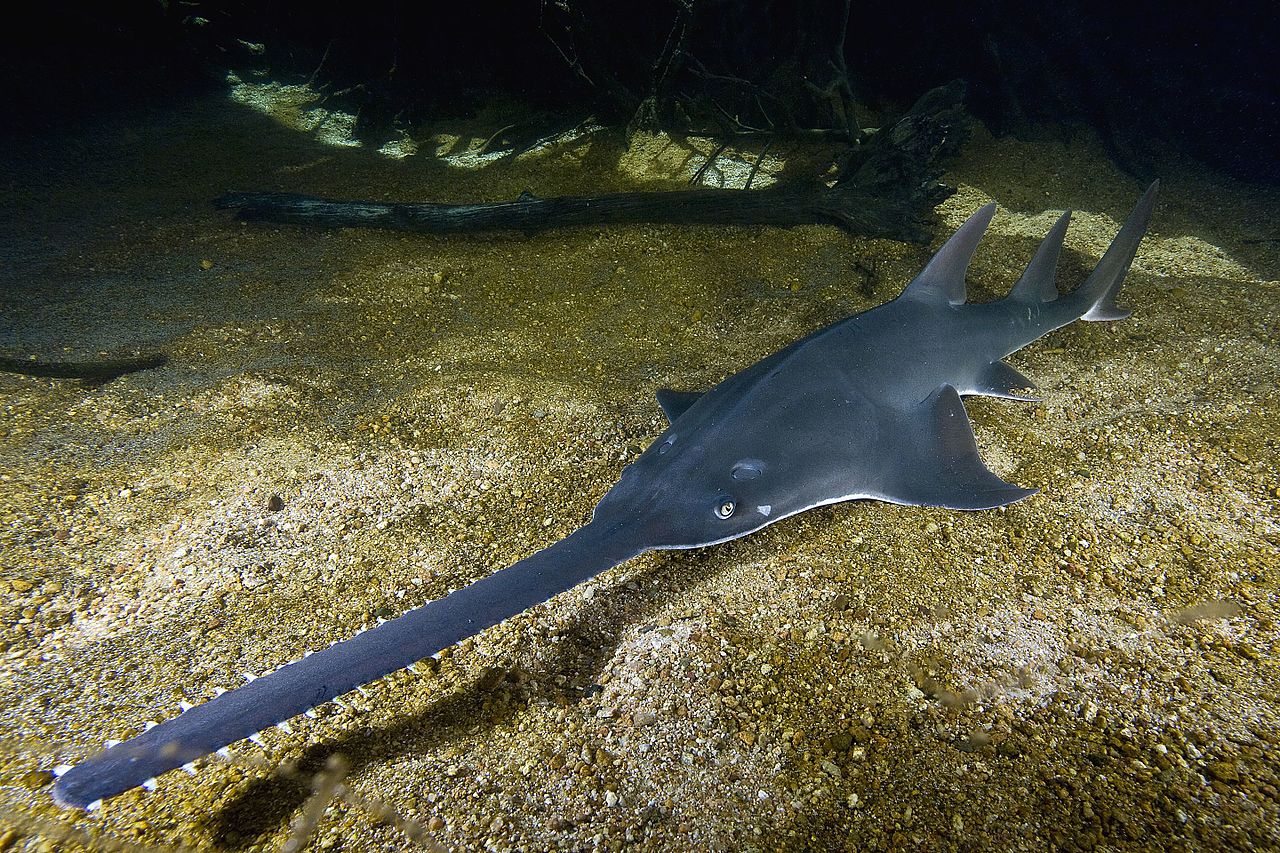| Common name | Gouldian finch |
| Scientific name | Erythrura gouldiae |
| Type | Bird |
| Diet | Grass seeds and insects |
| Size | Growing to a length of about 15cm and a weight of 15g |
Gouldian finches – also known as rainbow finches – grow to a length of about 15cm and weigh just 15g.
They are small, brightly-coloured birds that, as an adult, have a bright green back and yellow belly.
The breast in males is a deep purple but a lighter-coloured mauve in females. The faces of most birds are black, but there are also red and, less commonly, yellow-faced forms in the wild.
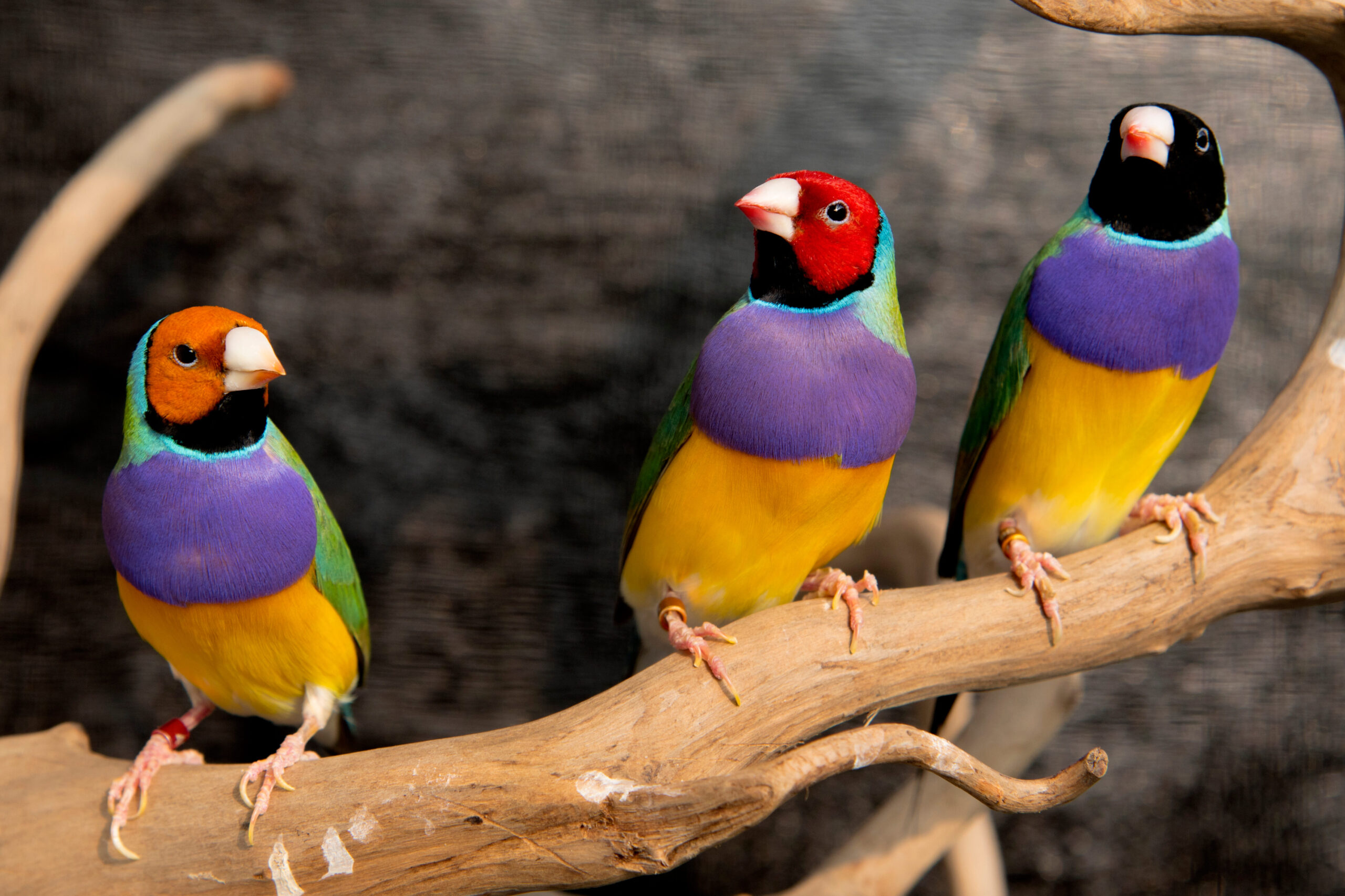
The habitat of the Gouldian finch is Northern Australia’s savannah woodlands and grassy plains – usually near a water source.
The species is now only known from isolated populations located within a former natural range that extends from Cape York Peninsula in Queensland, through the Northern Territory Top End and into the Kimberley in Western Australia.
Gouldian finches survive almost exclusively for most of the year on native grass seed. However, during the breeding season, their diet shifts and they tend to eat mostly insects, which are rich in the protein needed for raising young.
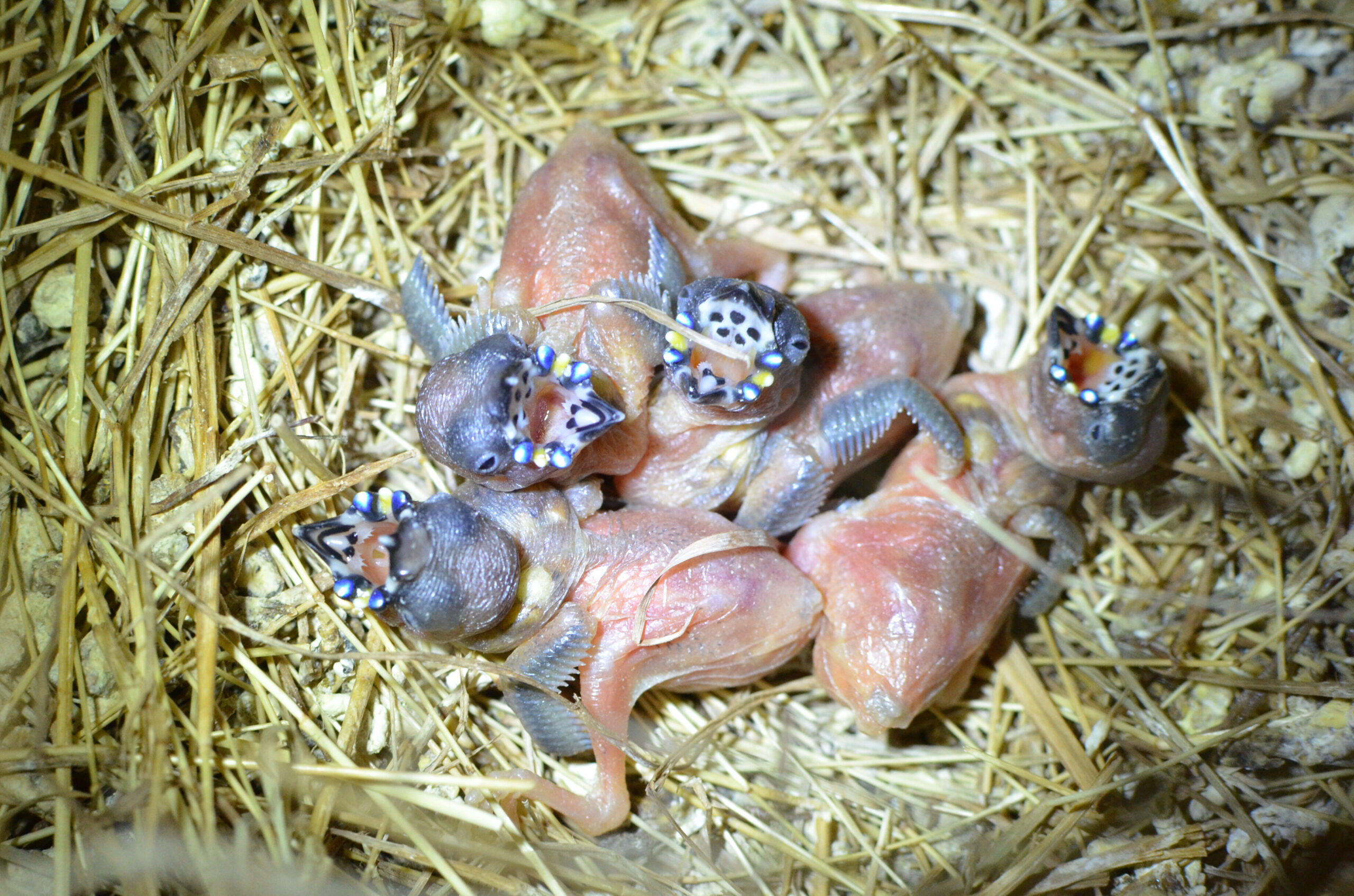
The biggest threats to Gouldian finch populations are reduced habitat and food due to altered fire regimes across Australia’s tropical savannah due mostly to expanding pastoralism, trapping for aviculture and deadly infections by air-sac mites all caused major declines in the species from the 1940s.
Gouldians are the only grass finches that make nests in tree hollows. They are monogamous, forming long-lasting pairs that breed early in the Dry when there’s plenty of food.
Females can lay up to eight eggs in a clutch and both parents share incubation.
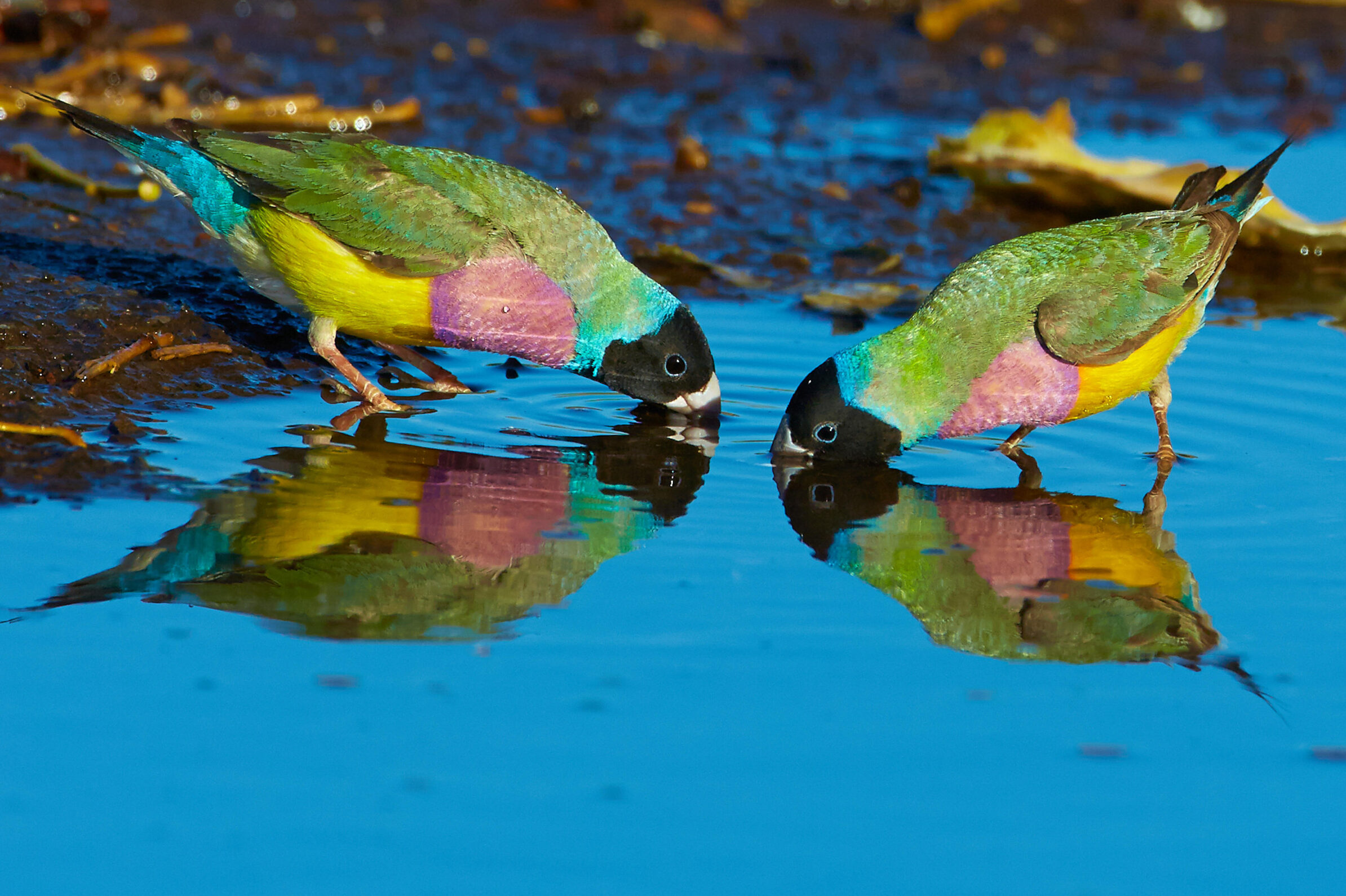
This is a highly social species that flies with other grass-eating species in mixed flocks of up to 2000 individuals. It’s nomadic, its movements aligning with the availability of its grass-seed food.
Gouldians’ bright plumage suggests new beginnings for First Nations people.

